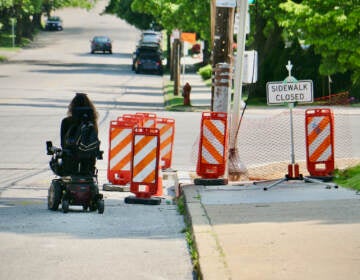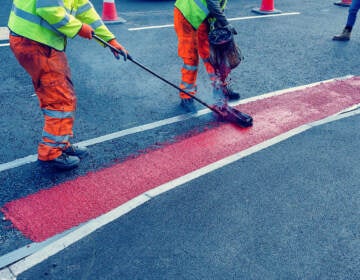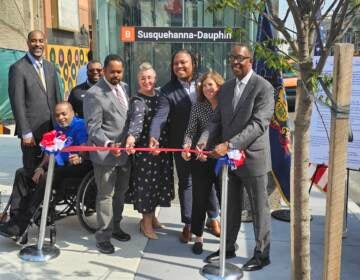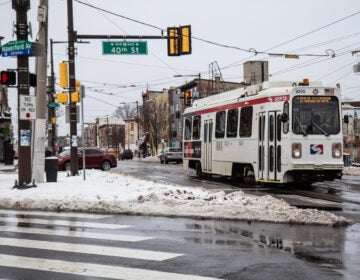What to know about Philly’s ADA settlement over curb cuts
The ADA settlement covers ramps that connect sidewalks to streets, but not sidewalks themselves. “It takes time,” one disability rights advocate said.
Listen 4:49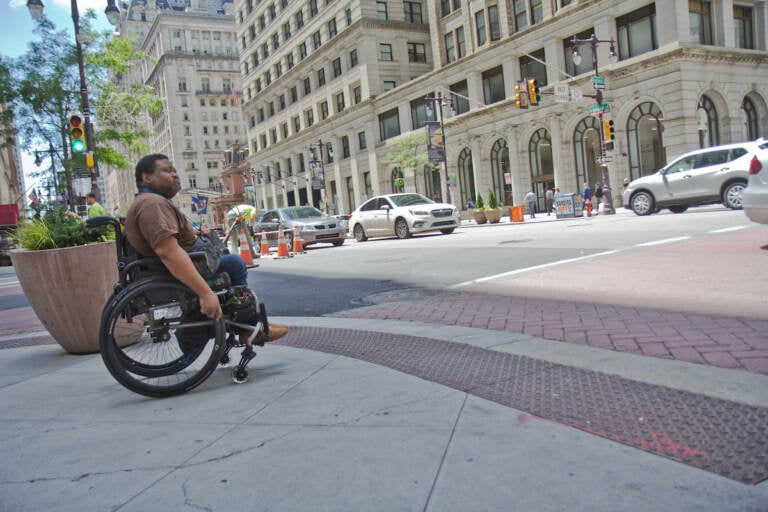
Jaleel King appreciates the wide and flat crosswalks at Broad and Chestnut streets in Philadelphia, which make it easy for him to operate his manual wheel chair safely across the intersection. (Kimberly Paynter/WHYY)
The city of Philadelphia settled with disabled residents and disability rights advocates last week, promising to build thousands of curb cuts compliant with the Americans with Disabilities Act in the coming years.
The settlement, which still needs to be approved by a federal judge, should eventually make it easier for people with mobility-related disabilities to get around the city. But it doesn’t include everything the people who sued the city set out to achieve.
“Systemic change and social change takes time,” said Thomas Earle, CEO of Liberty Resources — one of the organizations that filed the suit. “It doesn’t happen overnight.”
Here’s what you need to know.
The settlement arose from a 2019 lawsuit by four Philadelphians
The suit filed in 2019 by four Philadelphians with mobility-related disabilities and three disability rights organizations claimed the city’s maintenance — or lack thereof — of its curb cuts and sidewalks discriminated against people with disabilities.
Several of the plaintiffs had been injured tripping over hazards or falling out of wheelchairs while navigating the city. They described non-compliant curb cuts, uneven sidewalks, illegally parked cars, and construction without accessible alternative routes. They accused the city of violating the Americans with Disabilities Act and another federal accessibility law. They did not seek money beyond attorney fees — just a remedy that would make the city more accessible.
The suit achieved class-action status, so the plaintiffs settled the case on behalf of all “persons with disabilities or impairments that affect their mobility,” including people who use wheelchairs or are blind, and use Philly’s pedestrian rights of way.
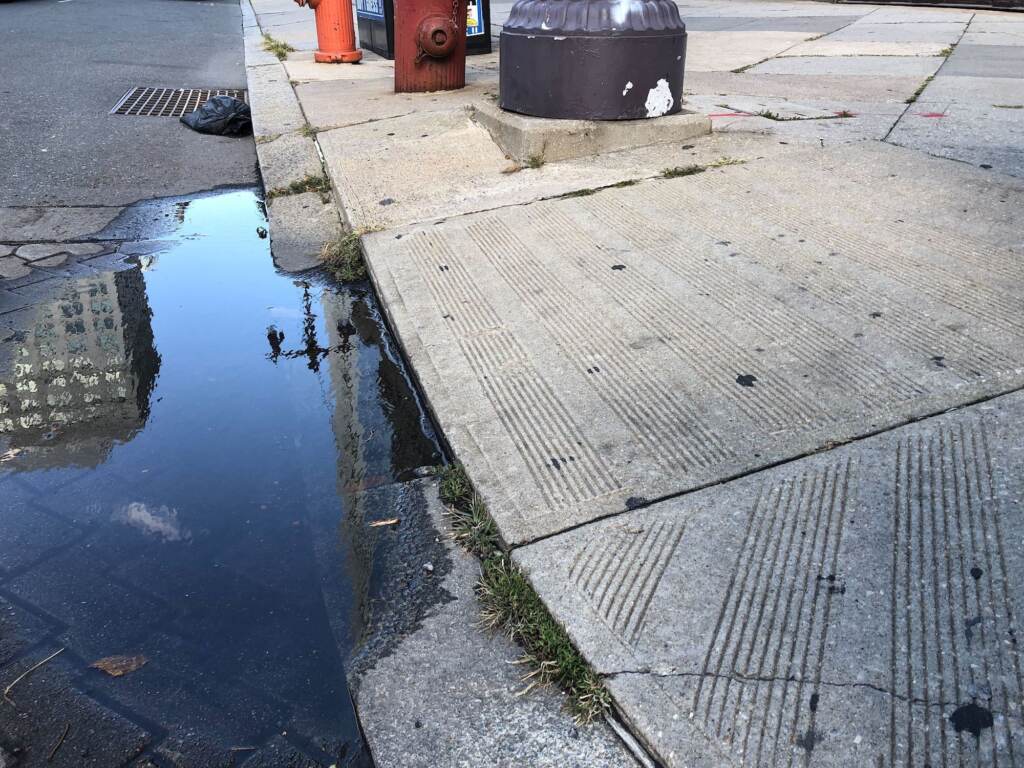
How inaccessible sidewalks hurt Philadelphians
Poorly maintained or inaccessible curbs and sidewalks can be frustrating, dangerous, or even isolating.
“We get stuck in our own homes,” said Anomie Fatale, a resident of Roxborough who uses a power wheelchair and was not involved in the suit. “Feeling like … if you go out, it’s going to be too hard to get somewhere, it’s not worth even trying. And then you just kind of stop existing, it feels like. You don’t meet any friends. You don’t have any neighbors.”
Inaccessible rights of way can take away people’s independence.
Briana Hickman, an artist who lives in West Philly and uses a manual wheelchair, said crumbling sidewalks and steep curb cuts make it almost impossible for her to get around safely.
“Basically, it prevents me from going anywhere alone,” she said. “I have to go with somebody, so I don’t go out often.”
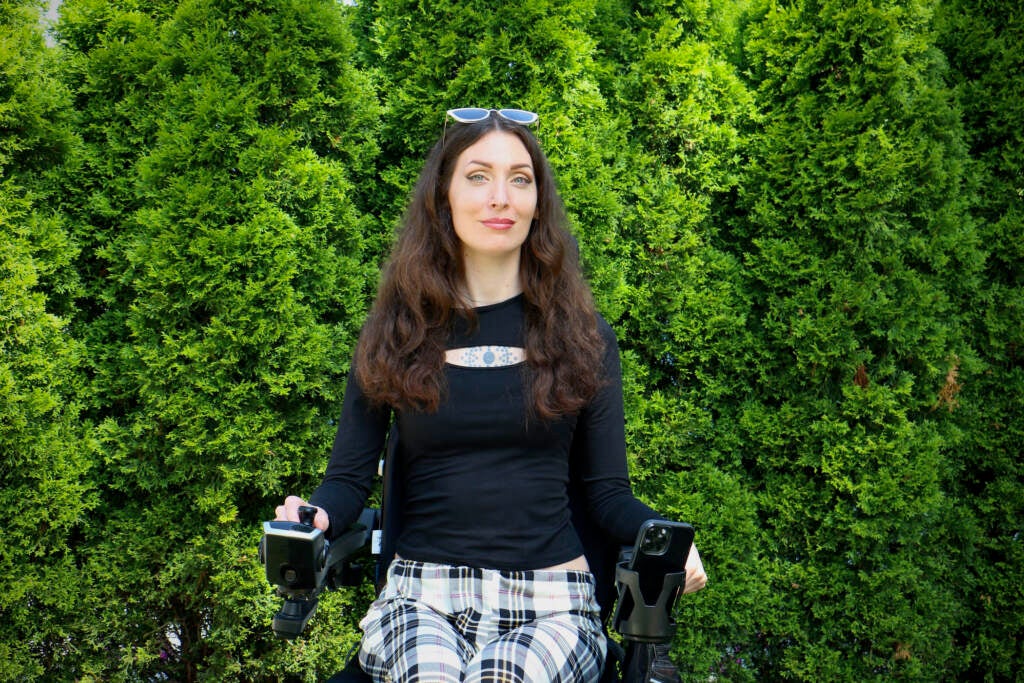
Wheelchair users often have to waste time doubling back or taking multi-block detours while traveling through the city, to avoid obstacles like uneven sidewalks or missing, steep, or broken curb cuts.
“This isn’t, like, Pac-Man,” Fatale said. “We should just be able to go across the street the way we want to.”
Fatale often found illegally parked cars blocking curb cuts when she lived in South Philly.
“There were times where I couldn’t get off my own curb,” she said. “I would have to wait for somebody, or go around like a couple blocks just to get off my own curb.”
Now in Roxborough, Fatale dealt with months-long construction this year on a curb cut she uses to get to her bus stop and pharmacy.
“There is absolutely no path for me to take my chair that’s not driving in a super, super busy street where people can’t see me,” she said in June. “I have to drive in the street now and risk my life just to do anything.”
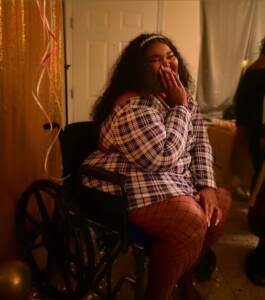
Traveling amongst traffic is a fact of life for many wheelchair users in Philly.
“For most people, if the sidewalk is not accessible, we go in the street,” said Jaleel King, a photographer who lives in the West Poplar neighborhood and uses a manual wheelchair to get around. “It’s just that simple.”
King, who was not involved with the suit, often pops a wheelie in order to get over small obstacles and some steep curb cuts.
“While it’s frustrating for me — frustrating and annoying — I’m pretty sure it’s a lot harder for someone who doesn’t have the same type of control and ability that I do, being a manual wheelchair user,” he said.
Philly’s inaccessibility felt alienating for Dynah Haubert, who lived in Philly for more than a decade before taking a job as a disability rights attorney for the federal government in Washington, D.C. They use a wheelchair and were not involved in the suit.
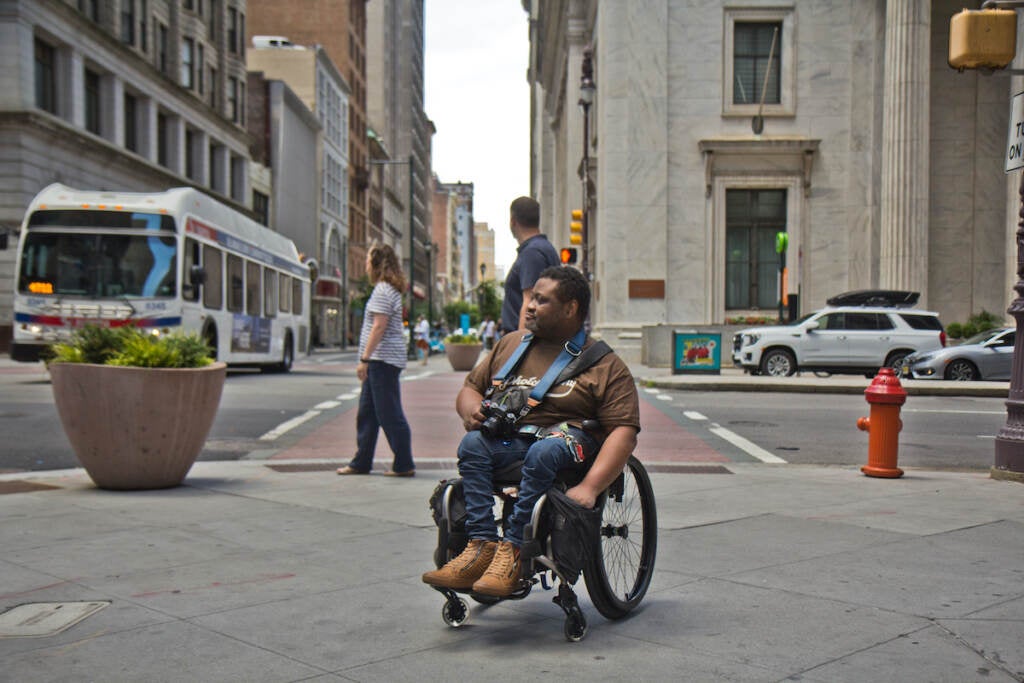
Haubert owned a condo in Philly. They built a “big community” of friends and connections. But had to constantly research and pre-plan trips around the city, only to find their path blocked by obstacles like damaged curb cuts or illegally parked cars. Haubert felt they were living in a hostile city — one that didn’t care about its residents with physical disabilities.
“It can be really challenging to the point where it just stops people from trying,” they said.
When Haubert got a new job in D.C. last year, they considered staying in Philly and commuting — but ultimately decided to move away.
“D.C. has proven to be so much more accessible in so many ways, including sidewalks,” Haubert said.
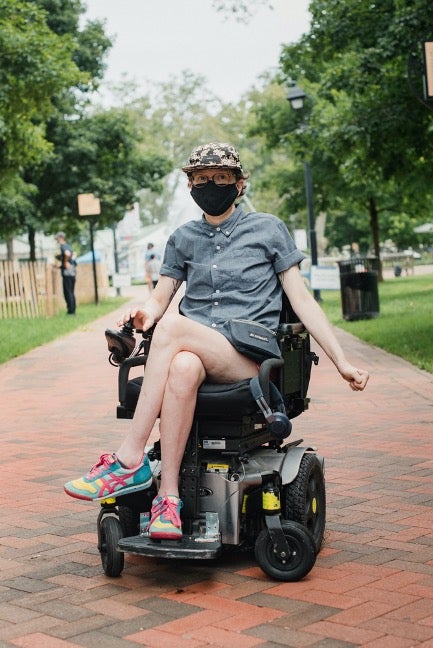
How does the settlement agreement compare to the status quo?
In the settlement, the city agreed to build or remediate 10,000 ADA-compliant curb ramps over 15 years, with interim deadlines for 2,000 ramps every three years and annual public status reports.
Curb cuts, also called curb ramps, are meant to smoothly connect sidewalks to streets.
The city’s obligation under the settlement averages out to 666 curb cuts each year — not too different from the pace of curb cut construction that’s already been happening in recent years. It includes curb cuts built through development projects.
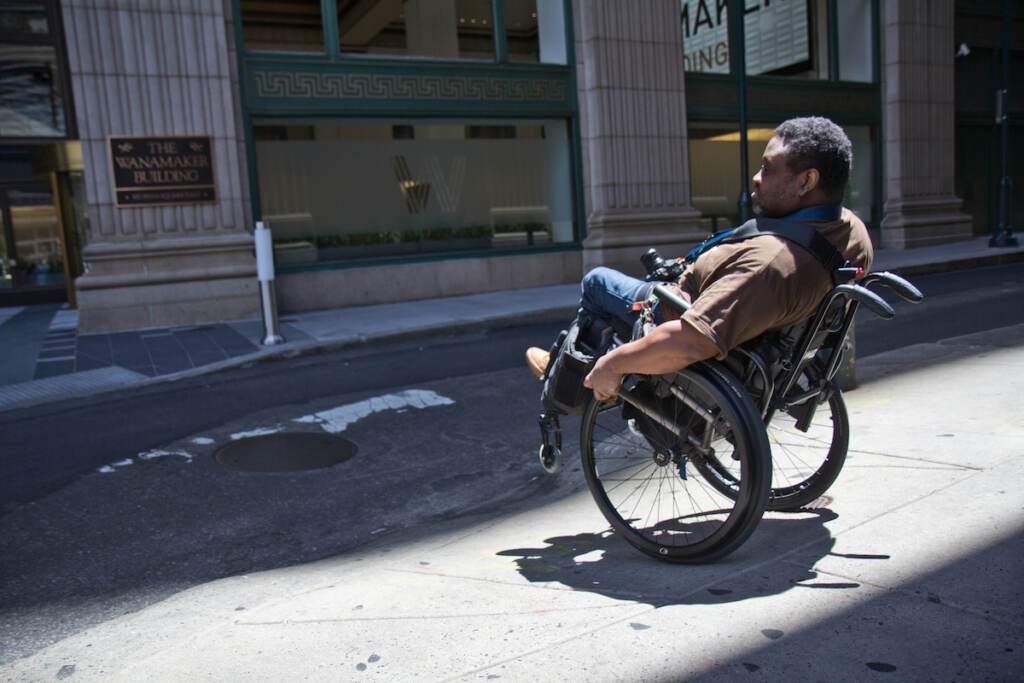
According to information provided by city officials, an average of 572 curb ramps have been built by city agencies or private developers each fiscal year since 2018. And this spring, city officials planned to build or fix around 1,500 curb cuts in 2022.
City officials say hundreds of curb cuts are in the pipeline. The Streets Department started construction on a project this month to build around 650 ADA-compliant ramps, according to spokesperson Keisha McCarty-Skelton. The city will start taking bids this week on another project to build around 600 more. A third project, for over 1,800 curb cuts, will go out to bid this winter.
During budget hearings early this year, city officials admitted the ADA suit motivated a recent uptick in curb ramp projects.
But the settlement is detailed and court-enforceable, said Jasmine Harris, a law professor at the University of Pennsylvania. That’s better than a city plan, because it “has more teeth to it.”
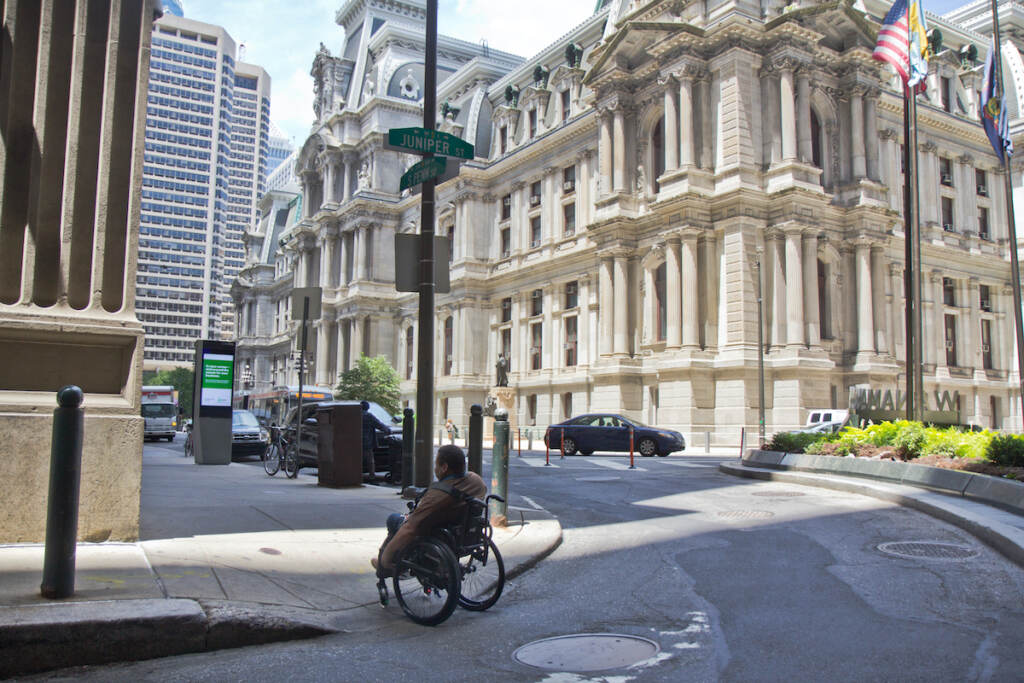
Harris said the Philly settlement is more detailed than similar settlements she’s seen in other cities.
“Granularity allows for faster implementation, and actually decreases those places of future ambiguity around implementation,” she said.
Still, the settlement’s 15-year timeline seems slow to Jaleel King, the photographer.
“It’s just a lot of time for inconvenience is what it boils down to,” he said. “I guess some progress is better than no progress, but some of these things just feel like things that should have been done in the course of infrastructure maintenance.”
Currently, the city is required to build or remediate ADA-compliant curb cuts whenever it resurfaces a road. That was the outcome of a court case from the early 1990s, which advocates say the city eventually stopped complying with. This requirement will continue under the new settlement, and road resurfacings will likely drive where the 10,000 required curb cuts go, said David Ferleger, the plaintiffs’ lawyer.
But the city is required to build or fix 10,000 ADA-compliant curb cuts under the settlement, no matter how much it costs. So if budget constraints or political priorities cause the city to reduce the amount of road resurfacing it does, that won’t affect how many curb cuts must be built or fixed, Ferleger said.
ADA-compliant curb cuts can make up the majority of the budget for a given street repaving project, according to Streets Department officials — up to $30,000 per corner. This spring, the city announced a new Streets Department crew to build ADA-compliant curb cuts in-house, rather than through contractors, in an attempt to speed up the process and lower costs. Before the settlement, the city had budgeted $27 million for street paving and curb ramps this fiscal year.
Residents will be able to request curb ramps on specific corners
The settlement does not prescribe where in the city the 10,000 curb cuts need to be built — but it does include a request system as a way to target areas most in need.
“Individual people who have mobility needs might have a need particular to them,” Ferleger, the plaintiffs’ lawyer said. “And that’s how we ended up with the curb request system.”
The settlement requires the city build, fix, and maintain curb cuts at specific locations residents request through the city’s 311 system, starting three years after the settlement goes into effect. The city will only have to build or fix 50 curb cuts and maintain 50 curb cuts through the request system per year.
Once a resident submits a request, the city must use “best efforts” to determine whether the corner needs a new curb cut or a repair within 30 days. Then the city must use “best efforts” to complete curb cut maintenance within nine months and curb cut installation or remediation within 12 months.
If the city receives more requests than it’s required to fulfill in a given year, it will prioritize requests using a publicized accessibility needs metric.
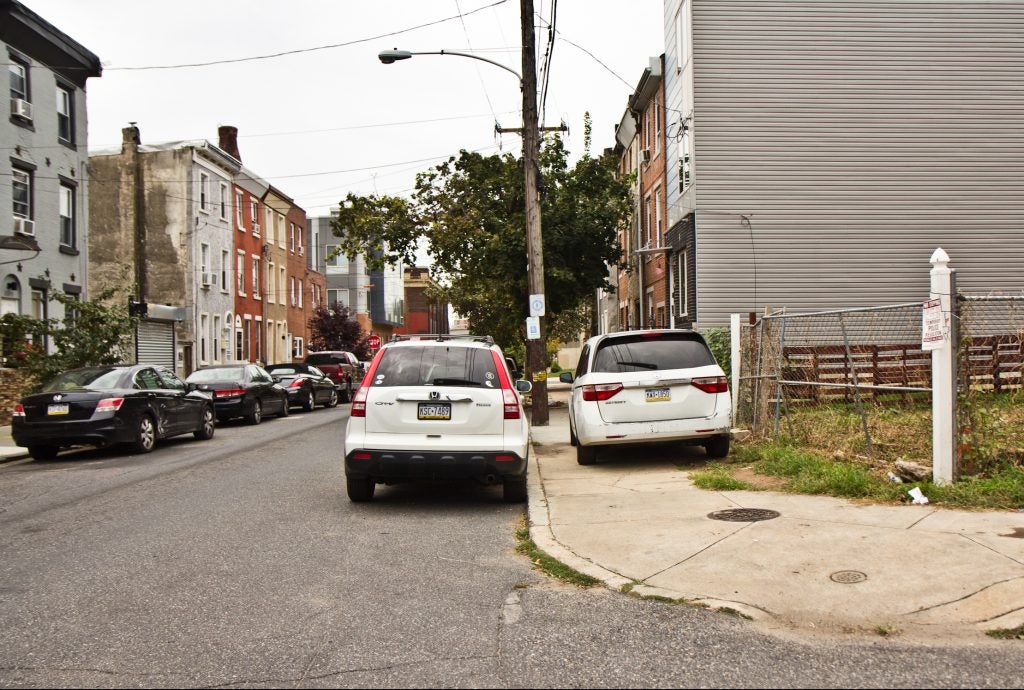
Sidewalks themselves are not included in the settlement
The settlement agreement only covers curb cuts — not sidewalks themselves or sidewalk obstructions — even though the original lawsuit included all of these. David Ferleger, the plaintiffs’ lawyer, said the narrower scope of the settlement is because the judge made a legal distinction between sidewalks and curb cuts.
Other issues raised in the plaintiffs’ 2019 complaint but not addressed explicitly in the settlement include parking enforcement, snow removal, and safe alternative routes during construction.
These things could be covered by the settlement, if they obstruct access to curb cuts, Ferleger said. It may just be a matter of seeking enforcement of the agreement through the court.
In general, maintenance of sidewalks in Philadelphia is the responsibility of the owner of the abutting property — not the city (although the city can replace sidewalks as part of big street rebuilding projects). Residents can file complaints over crumbling sidewalks through the city’s 311 system. Staff with the Streets Department can investigate these complaints and may issue a notice directing the adjacent property owner to make repairs. But there’s generally no penalty for failing to make the repairs.
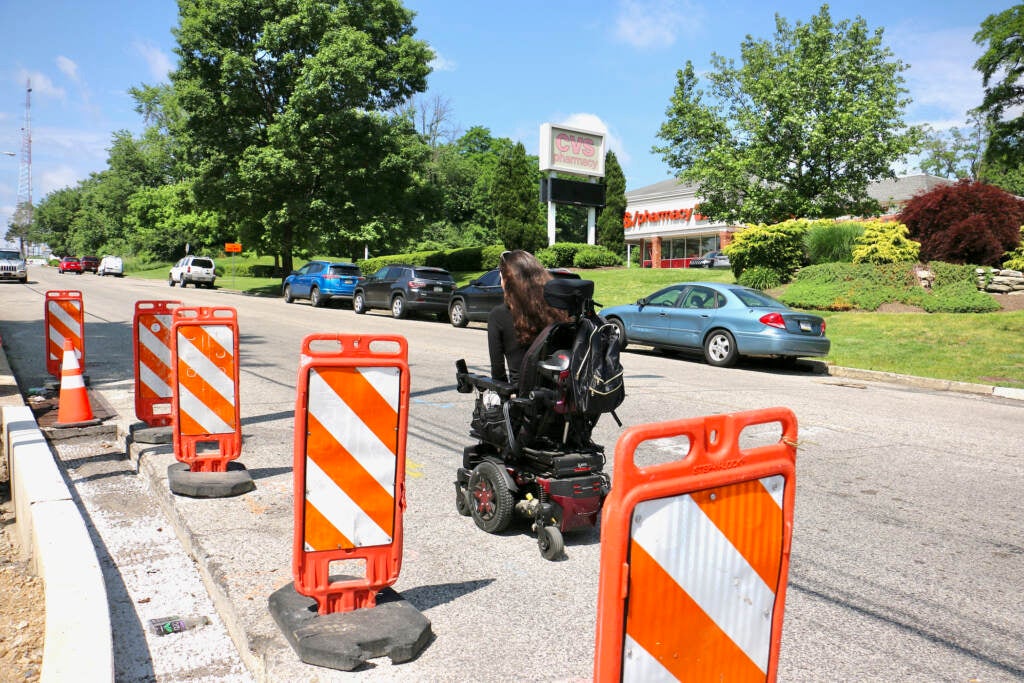
Advocates plan to keep pushing for better accessibility
Thomas Earle, of Liberty Resources, sees the settlement as a compromise.
“Parties have to give up claims or give up issues for the achievement of a systemic improvement that may not be perfect, but is far better than what is going on now, which was pretty much nothing,” he said.
Advocates will likely keep pushing for improvements on other issues of accessibility raised in the suit — such as snow removal and parking enforcement — through conversations with relevant parties, Earle said.
“Legal actions are always of last resort and we prefer to reach out and work out our differences in a friendly, amicable, non-litigious way,” he said. “But if our rights are ignored under the Americans with Disabilities Act, we’re very thankful that our civil rights … can be enforced in court.”
Snow removal on sidewalks is the responsibility of property owners, said Keisha McCarty-Skelton, of the Streets Department, and the city requires all developers to provide accessible alternative sidewalk routes during construction. McCarty-Skelton said the Streets Department is working with the Law Department to develop “aggressive enforcement policies,” to hold property owners accountable for sidewalk repairs.
Officials with the Philadelphia Parking Authority say parking enforcement officer staffing levels are currently only at 85% — but that enforcement around curb cuts and sidewalks could improve as staffing levels increase.
“We will continue to monitor this type of behavior and if observed, we will issue a parking violation for this infraction,” said Corinne O’Connor, deputy executive director of the Philadelphia Parking Authority.
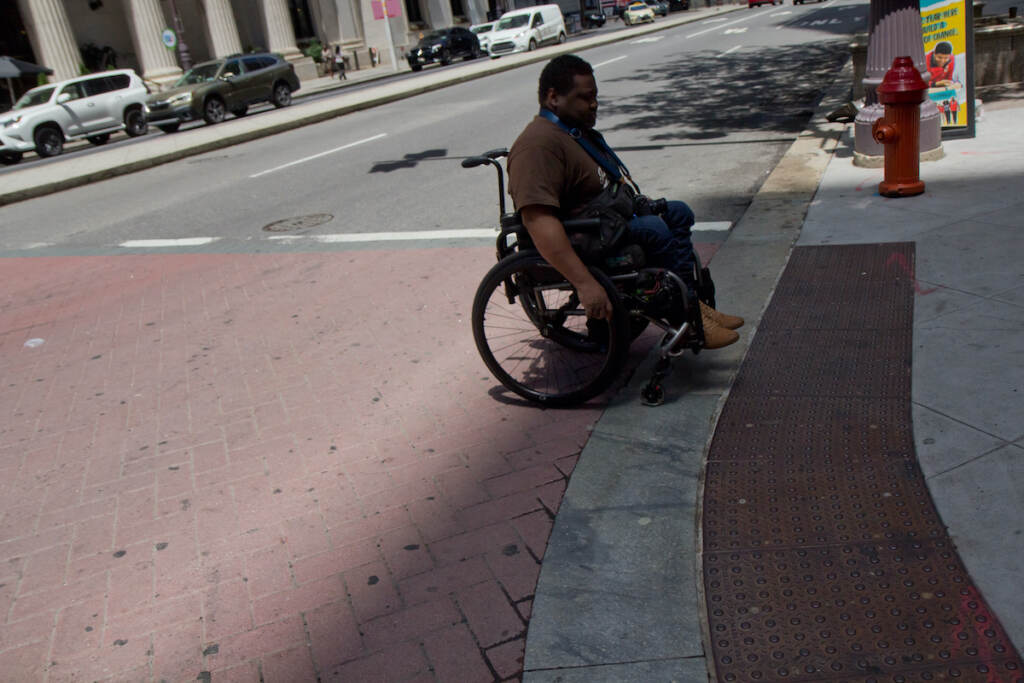
An accessible city is good for everyone
More than one in four adults in the U.S. have some sort of disability, according to the CDC.
But smooth sidewalks and proper curb cuts help everyone, regardless of whether they have a disability, said Jaleel King, the photographer.
“Delivery people benefit from it,” King said. “Mothers with strollers benefit, mothers with small walking children benefit from it. Everybody benefits from these curb cuts in some way or another.”
Fatale, the Roxborough resident, has experienced this firsthand. Her health insurance paid to install a small stretch of sidewalk at her apartment in Roxborough, which her neighbors now use to bring in groceries. She feels it increased the apartment building’s sense of community.
“I think integration between abled and disabled, that’s going to be the real change that we see,” Fatale said, before the settlement was reached.

Subscribe to PlanPhilly
WHYY is your source for fact-based, in-depth journalism and information. As a nonprofit organization, we rely on financial support from readers like you. Please give today.




